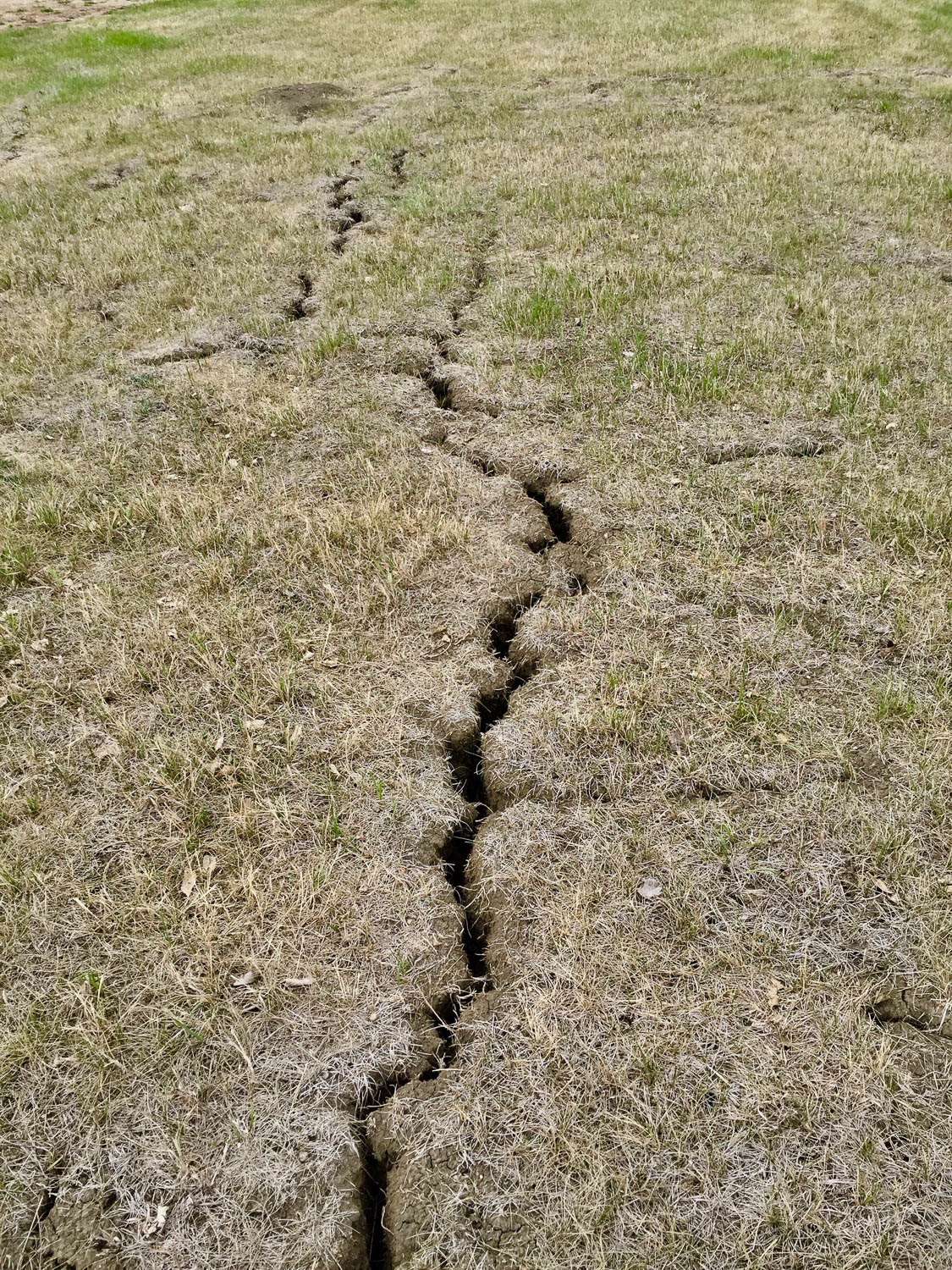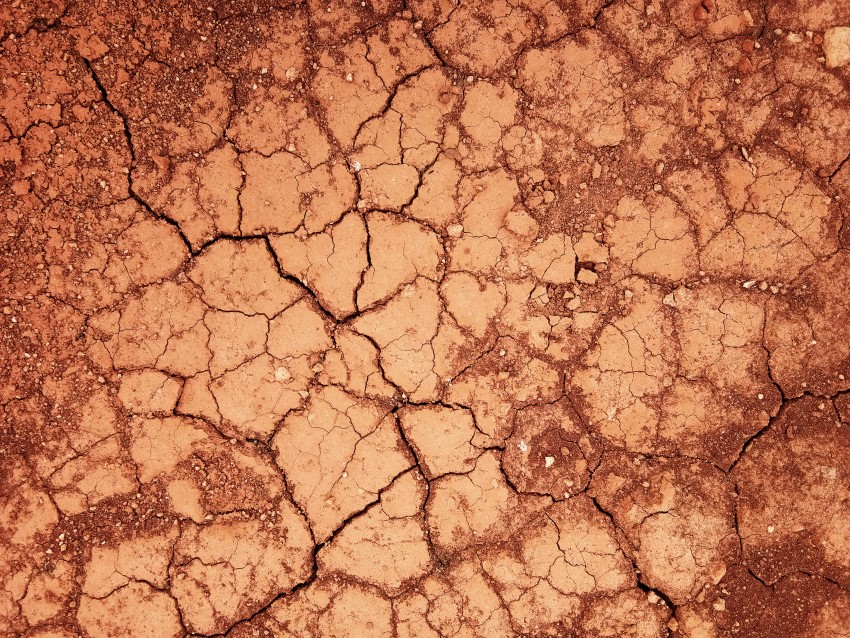To fix large cracks in clay soil, you can amend it with organic matter and apply regular irrigation to maintain moisture levels. Clay soil cracks occur due to water evaporation and can lead to issues with plant and root growth.
By incorporating organic matter, such as compost or peat moss, into the soil, you improve its overall structure and ability to retain moisture. Additionally, consistent watering can help keep the soil moist, reducing the likelihood of cracking. With these steps, you can effectively address and fix large cracks in clay soil, promoting healthy plant growth.

Credit: gardening.usask.ca
Understanding The Problem
Understanding the problem of large cracks in clay soil is crucial for effective fixing. Key factors causing these cracks can vary.
Identifying The Causes
Identifying the causes of large cracks in clay soil involves understanding natural phenomena and agricultural practices. Natural phenomena like drought and excessive moisture can contribute to soil cracking. These conditions cause the soil to shrink and expand, leading to cracks.
Additionally, agricultural practices such as over-tilling and improper irrigation can negatively affect soil structure. Over-tilling breaks down the soil’s natural structure, making it more susceptible to cracking. Improper irrigation, whether too much or too little water, can create imbalances in the soil moisture, further exacerbating the cracking.
By recognizing these contributing factors, gardeners and farmers can take appropriate measures to fix large cracks in clay soil and maintain its health and productivity.
How to Fix Large Cracks in Clay Soil: Step by Step Techniques
Effective Techniques For Fixing Large Cracks
Fixing large cracks in clay soil requires effective techniques such as proper water management strategies to prevent cracks. Use irrigation techniques that supply the right amount of water. Mulching is beneficial in retaining soil moisture, helping to prevent cracks.
Soil Amendment Methods
Soil amendment methods are crucial for fixing large cracks in clay soil. One effective approach is implementing organic matter into the soil. When choosing organic matter for clay soil, consider options like compost, well-decomposed manure, or leaf mold. These materials improve soil structure, drainage, and nutrient content.
Ensure the proper application and timing of organic matter. Spread a layer of organic matter on the soil surface and mix it thoroughly using a garden fork or tiller. Ideally, this should be done in the fall or early spring before planting.
The organic matter will gradually break down and enhance the soil’s fertility over time. By following these soil amendment methods, you can successfully address large cracks in clay soil, promoting healthier plant growth and better overall soil health.
Complementary Techniques
Soil aeration is a complementary technique that can help prevent large cracks in clay soil. By introducing beneficial soil organisms and promoting their growth, you can improve the structure of the soil. One such organism is the earthworm, which plays a vital role in breaking down organic matter and creating channels for air and water to penetrate the soil.

These channels help to prevent the soil from becoming compacted, which in turn reduces the occurrence of large cracks. Earthworms also help to improve the overall fertility of the soil by recycling nutrients and improving its drainage capabilities. So, when it comes to fixing large cracks in clay soil, implementing soil aeration techniques and encouraging the presence of earthworms can be highly beneficial.
Long-Term Solutions For Clay Soil Health
Clay soil can be a challenge in terms of fertility and structure. To address large cracks in clay soil, there are long-term solutions. Enhancing soil fertility involves steps such as sustainable practices, crop rotation, and cover cropping. These practices help maintain the soil’s structure and prevent the formation of cracks.
By avoiding commonly overused words and phrases, we can create a unique and engaging content. Keeping the sentences brief and using a variety of expressions ensures the reader’s interest. This helps in creating seo-friendly content that is easy to understand and free from plagiarism.
With these strategies in place, clay soil can be improved and made more suitable for gardening and farming.
Conserving Moisture In Clay Soil
Conserving moisture in clay soil can be challenging, but implementing rainwater harvesting techniques can help. By collecting and storing rainwater, you can provide your plants with a steady supply of moisture. Additionally, utilizing efficient irrigation systems can further reduce water loss and improve the overall health of your soil.
Drip irrigation, for example, allows water to be delivered directly to the roots, minimizing evaporation. Another option is using moisture-retaining mulch to prevent water from evaporating too quickly from the soil surface. By following these methods, you can fix large cracks in clay soil and improve its moisture retention capabilities.
With proper water management, you can ensure the optimal growth of your plants and create a healthier growing environment.
Preventing Erosion And Runoff
Large cracks in clay soil can be fixed by preventing erosion and runoff. Installing appropriate drainage systems, such as contour plowing and terracing, can help minimize soil erosion. By redirecting water flow and reducing its impact on the soil, these methods promote better water absorption and prevent the formation of cracks.
Contour plowing involves following the natural contours of the land when planting crops, while terracing refers to creating flat steps on sloping terrain. Both techniques prevent water from running off the soil surface, allowing it to be absorbed more effectively.

Taking these steps not only helps fix existing cracks in clay soil but also prevents further damage and promotes healthier soil for gardening or agricultural purposes.
Frequently Asked Questions For How To Fix Large Cracks In Clay Soil
How Can I Fix Large Cracks In Clay Soil?
To fix large cracks in clay soil, first, break up the soil using a garden fork or tiller. Then, add organic matter like compost or peat moss to improve the soil’s structure and drainage. Water the soil regularly to keep it moist but not waterlogged.
Applying a layer of mulch can also help retain moisture and prevent future cracking.
Is It Possible To Prevent Cracks In Clay Soil?
While it may not be possible to completely prevent cracks in clay soil, there are steps you can take to minimize their occurrence. Adding organic matter regularly to improve soil quality, watering the soil adequately to maintain moisture levels, and avoiding excessive foot traffic or heavy machinery on the soil can all help reduce the likelihood of cracks forming.
What Causes Large Cracks In Clay Soil?
Large cracks in clay soil are primarily caused by changes in moisture levels. When clay soil becomes dry, it shrinks and can form cracks. Conversely, when it becomes saturated with water, it swells, leading to more cracks. Other factors contributing to cracking can include compaction, lack of organic matter, and extreme weather conditions.
How Deep Should I Water Clay Soil To Prevent Cracks?
To prevent cracks in clay soil, it’s important to water deeply rather than frequently. Water should penetrate at least 6 to 8 inches into the soil to ensure proper hydration and minimize the risk of drying out. Using soaker hoses or drip irrigation systems can help deliver water slowly and deeply into the soil and prevent excessive surface runoff.
Can I Amend Clay Soil To Fix Cracks?
Yes, you can amend clay soil to fix cracks. Adding organic matter such as compost, well-rotted manure, or peat moss can improve the structure and water-holding capacity of the soil. Mixing these amendments thoroughly into the top few inches of soil will help break up compacted clay and promote better drainage, reducing the likelihood of cracks forming.
Conclusion
Addressing large cracks in clay soil requires a systematic approach for long-term success. By understanding the causes behind the cracks, such as drying and shrinking, we can implement preventive measures. Ensuring adequate water supply through regular irrigation and maintaining a consistent moisture level will help minimize soil shrinkage.
Additionally, incorporating organic matter, such as compost, into the soil can improve its structure and reduce cracking. Remedial actions, such as filling the cracks with a soil mixture or applying a top layer of mulch, can also aid in preventing further cracking.
Regular monitoring and maintenance are key to addressing cracks promptly and preventing them from worsening. Following these guidelines will help you restore the health and stability of your clay soil, enabling you to enjoy a thriving garden or landscape.

